Fill your home with warmth! Which heating radiators are best to choose for an apartment
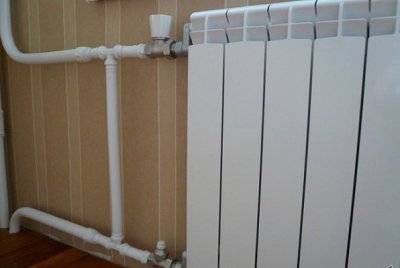
When starting renovations in an apartment, you have to think about replacing heating radiators that have served their purpose.
It would be better to install new modern devices instead., the efficiency of which is several times higher, and the design is more interesting.
And here the question arises - which batteries are suitable for installation in an apartment building, because the range of heaters on the modern market is quite large.
Content
Parameters for choosing the right radiator for your apartment

All heating devices are classified into several groups depending on the material they are made from and their design features. Batteries are made from:
- cast iron;
- steel;
- aluminum;
- bimetal.
Structurally, radiators are:
- panel;
- sectional;
- tubular;
- lamellar.
Threats of central heating in apartment buildings
When choosing a heating device, think about what factors speak in favor of one or another type of batteries. The difference between an apartment and a private house is that the heating of the latter is autonomous. But central heating, which has a number of undeniable advantages, also conceals threats, therefore When choosing a heater, you should take into account that:
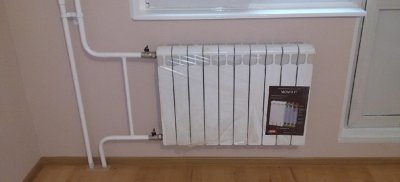
- Water that travels through pipes for a long time, contains impurities that cause corrosion of heating system (HS) elements.
- Liquids invariably contain solid particles, which scratch pipes and radiators from the inside, and after a few years they wear them down to holes.
- Central heating often suffers from temperature fluctuations, depending on weather conditions.
- And the biggest danger is pressure drops or water hammer. The causes of this trouble are a sudden closing of the pumping station valve or air getting into the heating system. Water hammer can cause a huge number of problems, the least of which would be a broken radiator, but hot and far from clean water can ruin furnishings, flood the neighbors below, or even cause harm to people nearby.
Attention! According to the risks lurking in the housing of apartment buildings, It is necessary to choose heating radiators that can withstand these threats.
Atmospheric pressure
The battery pressure declared by the manufacturers, must exceed the working and test pressure in the CO. Information about how many atmospheres of pressure there are in your home can be found in the management company.
The test pressure is one and a half times higher than the working pressure., so it’s better to focus on it.
Reference. Five-storey buildings under construction 70-80s, Khrushchev-era buildings have a test pressure no more than 8 atmospheres, whereas in modern houses this figure not less than 15.
Water hammer
The likelihood of water hammer occurring is higher the older the house and, accordingly, the heating pipes.
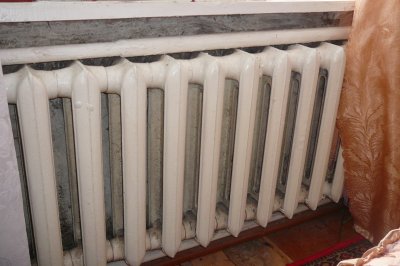
They say that the pressure in the pipes is “playing up” clicking, humming and other extraneous soundsIf they occur, contact your utility service.
But it is not always possible to protect yourself from such trouble. Therefore, if you noticed extraneous noises in the pipes when replacing the heating radiator, Choose one that can withstand sudden pressure surges in the system.
Quality of the coolant
The quality of water in the heating system is far from ideal, so radiators must be able to withstand it both chemical and physical attacks. Heaters must be made of neutral material or have a special coating inside.
The thickness of the battery walls is also important. Slag particles, flowing through the pipes, act like sandpaper and rub off every metal over time. The thicker the wall of the heating device, the longer it will last.
Heat dissipation
The main function of radiators is to heat the room. When choosing a radiator for your apartment, consider its heat output, which depends on the thickness of the walls, the material of manufacture and design features. The higher the heat output, the warmer it will be in the house.
Appearance
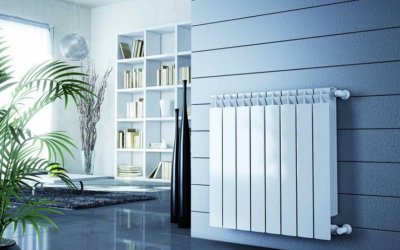
In Soviet times, there were some in apartments ugly cast iron sectional radiators.
The owners resorted to all sorts of tricks to give them a pleasant appearance: they painted them, installed screens and covered them with curtains.
There is no need for this now, because modern heating radiators can harmoniously complement the interior, the main thing is to choose them correctly.
Service life
Not the last parameter when choosing a heating radiator is the service life. It is clear that this depends not only from the quality of the battery, but also from the properties of the CO. And yet, the higher declared by manufacturers the service life of a particular heater, the longer it will last. This means that you won't have to fiddle with bulky devices every few years, invite specialists, and pay for the purchase and installation of new heating devices.
What types of heating batteries exist?
Heating radiators are divided into cast iron, steel, aluminum and bimetallic.
Cast iron
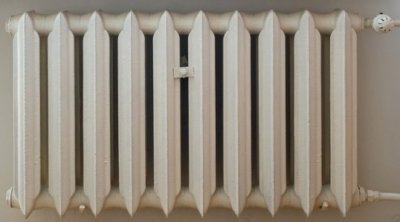
Cast iron batteries produced several decades ago, serve in many apartments to this day. It follows that the service life of such a battery is at least half a century.
When choosing a cast iron heater, there is only one goal - for it to last as long as possible.
In addition to its long service life, Cast iron radiators have other advantages:
- Heat accumulation of at least 30%. Even after the heating is turned off (especially important in emergency situations), cast iron will heat the room for a long time.
- Resistance to physical and chemical attacks. Cast iron does not need to be coated with special compounds from the inside. It is not afraid of high acidity and other chemical impurities in the coolant. And the strong thick walls will not be rubbed by abrasive particles.
- In apartment buildings, water is sometimes drained from radiators during the summer. Cast iron can be left without a coolant for a long time - it won't rust.
- Due to the design features and the method of heat transfer - radiation, Cast iron radiators are capable of heating a fairly spacious room. In addition, they heat not only the air, but also the surrounding objects. At the same time, the heat output of cast iron radiators is changed by removing or adding several sections.
- Low cost — a significant plus in the list of advantages of cast iron batteries.
Of course, no thing created by human hands is perfect. So, a cast iron heater also has its drawbacks.
The main ones are bulkiness and heavy weight. Despite the fact that modern cast iron radiators only vaguely resemble the monsters of Soviet production, their weight remains large, which makes installation difficult.
Cast iron is a rather brittle metal, and therefore does not always withstand water hammer. The maximum pressure that cast iron radiators can withstand is 12 atmospheres.
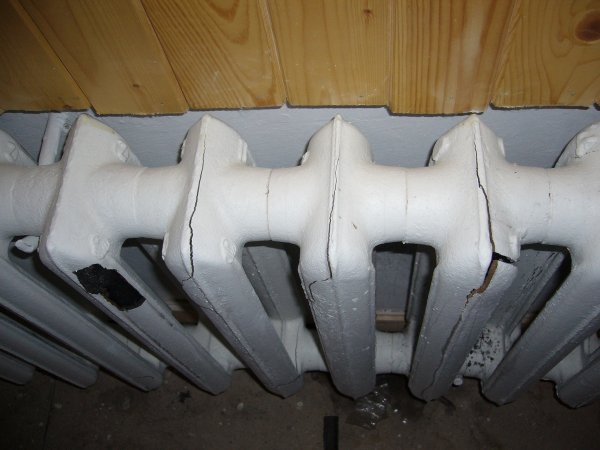
Photo 1. Consequences of water hammer in an apartment building: cast iron radiators cracked in several places.
Steel
Steel radiators by design can be tubular or plate-shaped. They are a circuit into which the coolant is poured. Plates are welded to the circuit, creating a convection effect.
The thermal conductivity of steel is quite high, which, combined with the large area provides good heat transfer. At the same time, the thickness of the walls of a steel radiator is less than that of a cast iron one, and therefore they heat up quickly.
Advantages:
- good heat dissipation;
- service life from 15 to 25 years old;
- installation in a heating system with pipes made of any material;
- low cost;
- aesthetic appearance;
- light weight and easy to install.
Flaws:
- Low working pressure, about 6-8 atmospheres, does not allow steel heaters to withstand water hammer with honor. And even in a modern multi-story building, where the working pressure exceeds 12 atmospheres, such devices will not last long.
- If the number of radiator plates is calculated incorrectly before installing the steel battery, it is impossible to add or remove unnecessary ones.
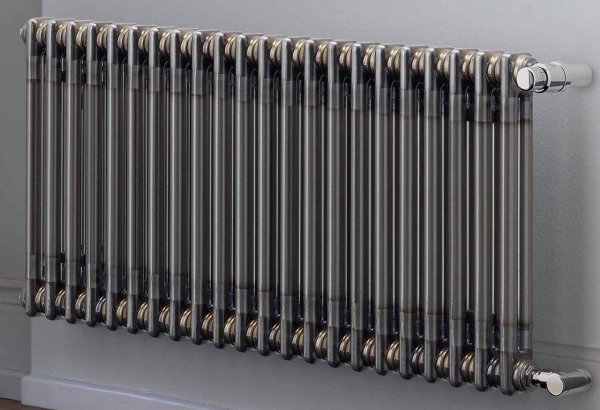
Photo 2. Steel tubular heating radiator. The device looks quite stylish, it will suit a modern interior.
Aluminum
Aluminum batteries are attractive in appearance. The metal itself has a silvery hue, which allows them to be installed in any interior. At the same time, they, like steel, heat the room in two ways: convection and radiation.
Advantages:
- high heat transfer, reaches up to 0.2 kW per section;
- the ability to change the heat output of the device by adding or removing sections;
- light weight and easy to install;
- protection from external influences due to a special coating;
- high working pressure - up to 16 atmospheres.
Flaws:
- Low resistance to chemical and physical influences of the coolantI. It is impossible to use aluminum radiators in systems where the pH level of the water is high. And the thin walls do not resist the attacks of abrasive particles for long.
- When aluminum interacts with copper and brass, it forms a galvanic pair, which causes currents to appear on its surfaceWhen using aluminum radiators for connection to the heating system, use dielectric pipes and ground the heaters themselves.
- The thin walls of the radiator, despite the high operating pressure, do not withstand its surges well. Water hammer will damage even a newly installed device.
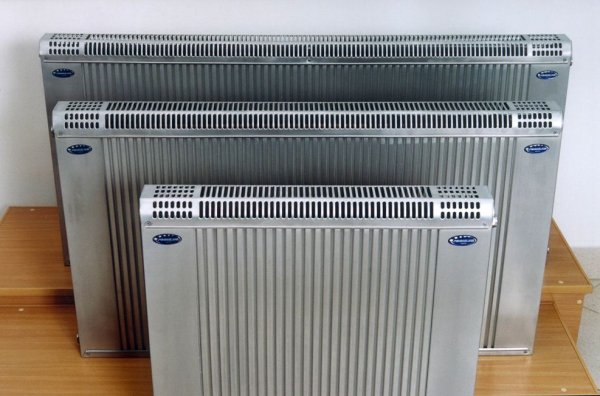
Photo 3. Aluminum panel heating radiators. The products are available in three sizes.
Bimetallic
These radiators are made of a steel or copper core, around which a pleasant-looking aluminum case is made. Such radiators will serve no less than cast iron ones: 40 years and older.
Advantages:
- pleasant appearance;
- working pressure up to 50 atmospheres;
- resistance to aggressive coolant;
- high heat transfer;
- light weight and easy to install;
- Possibility of installation in a heating system with any type of pipes;
- resistance to water hammer.
Flaws:
- high cost.
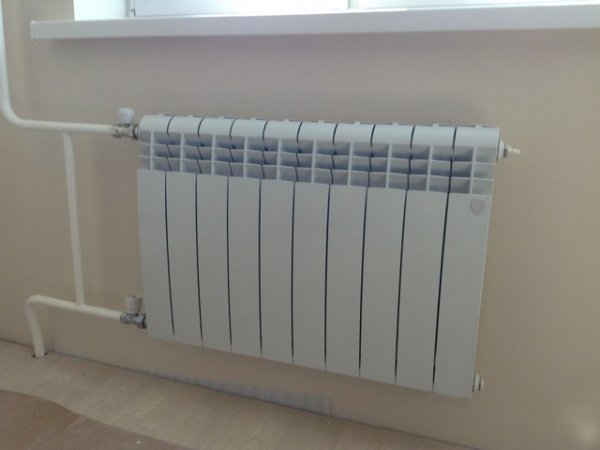
Photo 4. Bimetallic detachable radiator. The product consists of sections, the number of which can be changed.
Useful video
Watch the video, which talks about the characteristics of different types of radiators, their correct selection.
How to choose the best radiator for your apartment
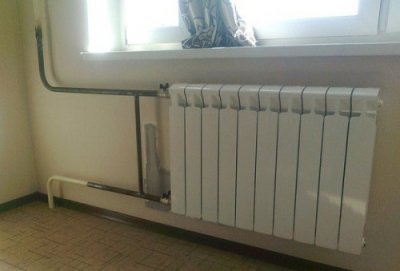
Based on the above, we can conclude that steel and aluminum radiators, despite many advantages, will not last long in apartment buildings.
That's why Two types of heaters are suitable: cast iron or bimetallic.
If finances allow, then why not use them for good - buy heating devices that combine the advantages of all three other types of radiators. In addition, such batteries, based on their characteristics, are best installed in new multi-storey buildings with high working pressure.
Important! If the predecessors of the new batteries were made of cast iron, you can purchase both cast iron and bimetallic heaters. Otherwise, bimetallic batteries are preferable.
Cast iron radiators are the best choice, if you live in a Soviet-era five-story building and are short on funds.









Comments